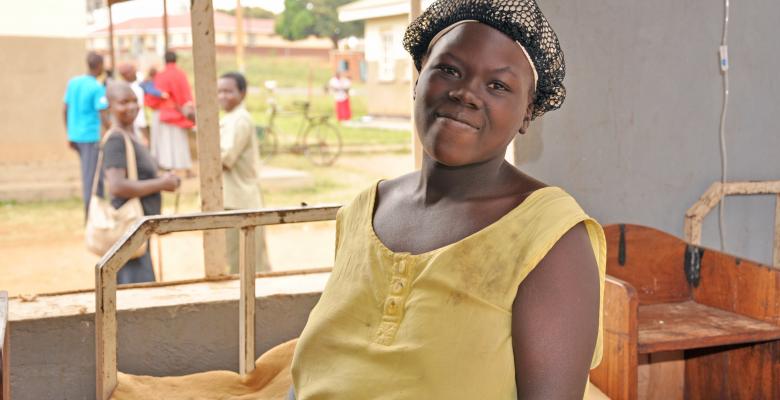
In Mbale District, Uganda, one exhausted midwife—widely loved by her community and usually fantastic at her job—found herself snapping at her clients and being rude. For days, she’d been working without rest at a clinic that offers 24-hour maternity care. And she was burned out.
She’s not alone. The country’s vast shortage of health workers has left almost half the jobs in the health sector empty and the other half filled with staff who are overworked to the breaking point. In Mbale, clinicians could give patients only about five minutes of their time, which led to far too many mistaken diagnoses and prescriptions.
The Ugandan government is working to strengthen its health system. This is a complex undertaking, though. One that takes planning and expertise and money.
Most of all, it takes information.
Running the numbers
Data are the fuel that powers any robust national health care system. Countries need current, accurate statistics about their health workforces to make sure they have the right health workers in the right places, and that those health workers have the skills and qualifications to do the job.
That’s why Uganda’s Ministry of Health has been working with two USAID-funded projects, CapacityPlus and the Uganda Capacity Program, to develop an electronic information system to keep tabs on how many health workers are employed throughout the country, where those health workers are, how many positions are vacant, and other key data.
The Ministry now conducts annual, country-wide, health worker staff audits, which give Ugandan officials invaluable information about the country’s health workers and help the Ministry to pay salaries, recruit new workers, and fill open positions. It’s the kind of information that buttresses a strong health infrastructure—and the kind many governments don’t yet have.
A hiring freeze
In 2012 the health sector hit an alarming snag. Uganda’s Ministry of Public Service announced a recruitment freeze for all public sectors—including health. Not only would it mean that no new health workers could be hired for an entire year, but any positions that were unfilled—some 42% of them—would disappear, along with any that were vacated by workers who were leaving or retiring.
Luckily, the data saved the day.
The Ministry of Health and its partners used the health worker staff audits to push back. They highlighted the shortages and explained to Parliament what they meant for the country. And the team provided recommendations for feasible, evidence-based solutions that would strengthen the health workforce, rather than destabilize it.
It was a contentious issue, as budgets always are—but in the end, Parliament was so impressed it decided not to cut health sector spending at all. In fact, it found a way to trim the budgets of 23 other ministries and government bodies to dedicate 49.5 billion Ugandan shillings (US$19.8 million) to the health sector instead.
It was a great coup for the health sector and for the data-gatherers. But even with the money, swelling the ranks of the workforce hasn’t been easy.
A flood of applications
Across the country, districts faced the onerous task of not only determining what kinds of health workers their populations need most—doctors? midwives? nurses? pharmaceutical techs?—but also of advertising for them, screening them, hiring them, and making sure they get paid enough and on time.
As over 35,000 applications poured in for just over 6,000 open positions, the Ministry went back to those health worker audits and used them to pinpoint the numbers and cadres of health workers Uganda needs and where they should be based, according to the data.
Then the Ministry worked with the Uganda Capacity Program to find cost-effective ways to advertise the jobs. They also used its e-shortlisting tool to screen the flood of candidates, which cut the screening time and costs in half. Altogether, they saved the government millions of shillings in reduced inefficiencies.
A big increase in health workers
In Mbale District last year, only 337 of 708 health worker positions were staffed. Now the district has been able to recruit an additional 245 health workers, taking much of the burden off of the existing staff and providing skilled, qualified care for the people who live there.
Nationwide, Uganda has now added almost 7,000 new workers to its health workforce. When the Ministry is finished with this hiring cycle, it will have boosted the percentage of filled health worker positions in the country from 58% to 70%—all thanks to health-sector leaders having the data they needed to advocate with decision-makers at just the right time.
The Uganda Capacity Program is funded by USAID and led by IntraHealth International. IntraHealth is the lead partner in the CapacityPlus global project, also funded by USAID.
To learn more, watch the video, “That’s Improvement!”: Uganda Focuses on Health Workers.
—Margarite Nathe, Senior Editor/Writer, IntraHealth International

